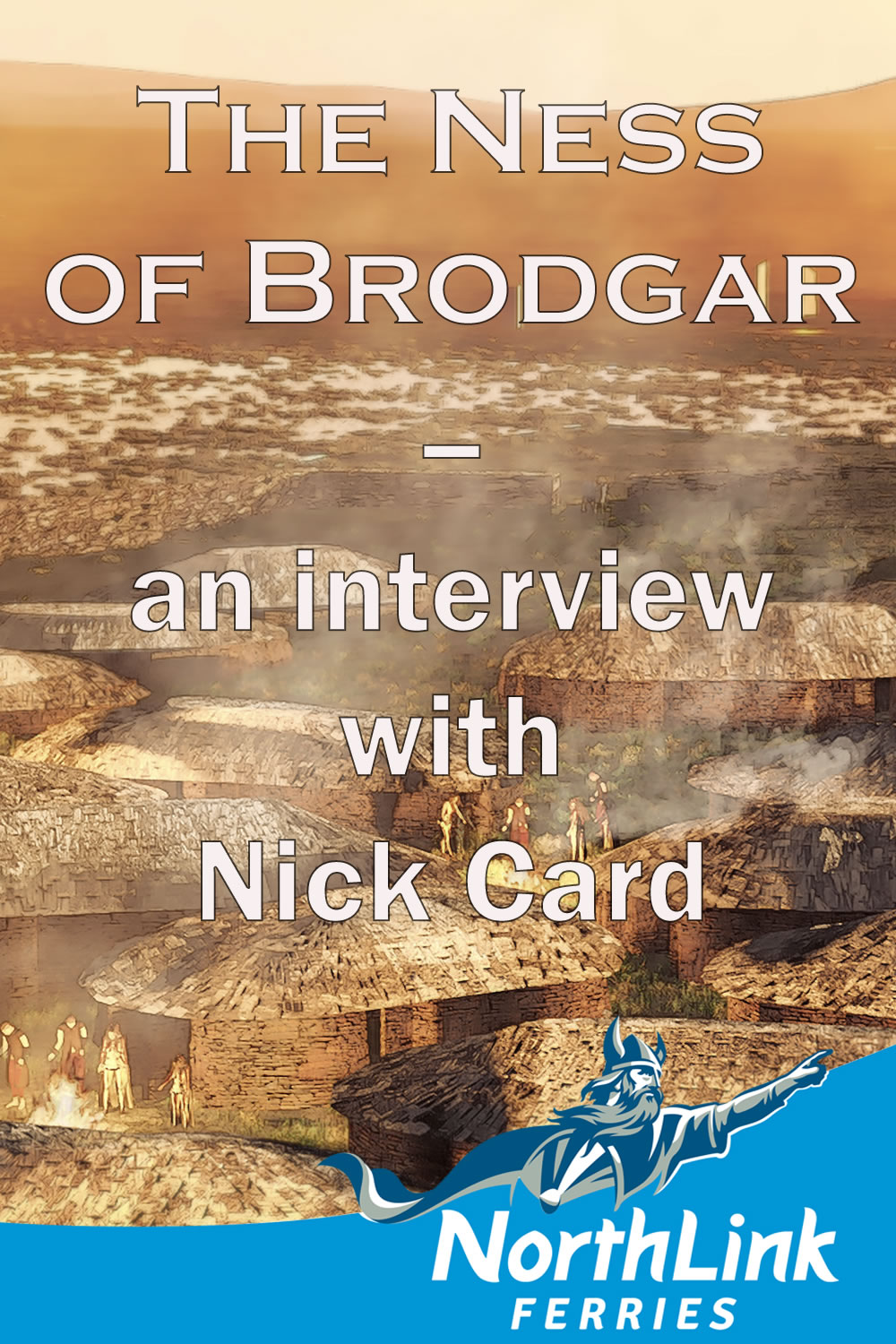The Ness of Brodgar – an interview with Nick Card
The Ness of Brodgar is a new archaeological discovery in Orkney located between the Ring of Brodgar and the Standing Stones of Stenness. The site has a huge amount of Neolithic art, a massive enclosing stone wall, houses, and a large building of great significance. We were delighted when Nick Card, Director of the Ness of Brodgar, University of the Highlands and Islands Archaeology Institute answered our questions about the Ness of Brodgar!
“When you stand at the Ness you feel like you’re in the middle of a huge natural amphitheatre that’s defined by the hills all the way around. There is no doubt that our Neolithic ancestors chose this area because of its very special nature.”
Q. To start, can we ask about you Nick? When did you become interested in archaeology?
A. I was 7 years old and had a wonderful primary teacher called Miss Campbell. I remember her showing us photos of Tutankhamun and reading about the discovery. I thought that’s what I want to do – Indiana Jones hadn’t been invented in those days!
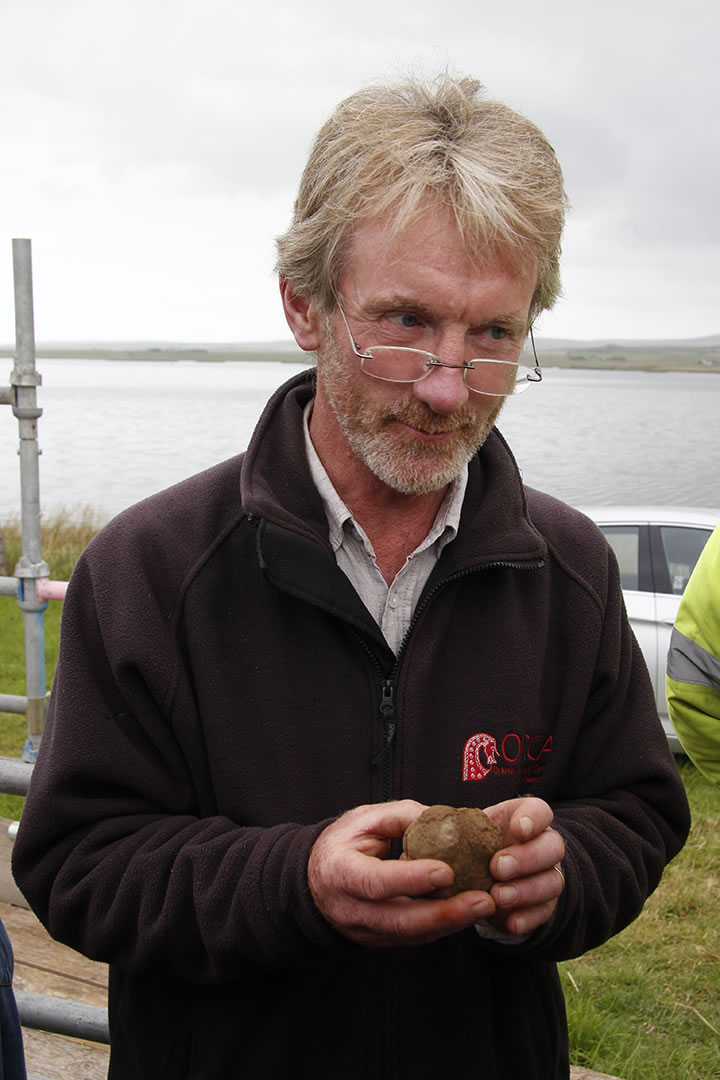
Q. Where do you hail from, and how did you first find your way to Orkney?
A. I spent most of my childhood in Ayrshire and studied at Glasgow University. I started off studying civil engineering but soon discovered that wasn’t for me, so I moved across to Archaeology. While I was a student I visited some friends who were digging on Westray and that’s when Orkney first cast its spell on me!
Later I spent many summers on Sanday when I was a post graduate – up to three or four months at a time – digging at Pool and Tofts Ness for Bradford University. I thought if I could choose anywhere to live – Orkney’s the place! So 25 plus years ago I moved first to Hoy and now reside on Mainland.
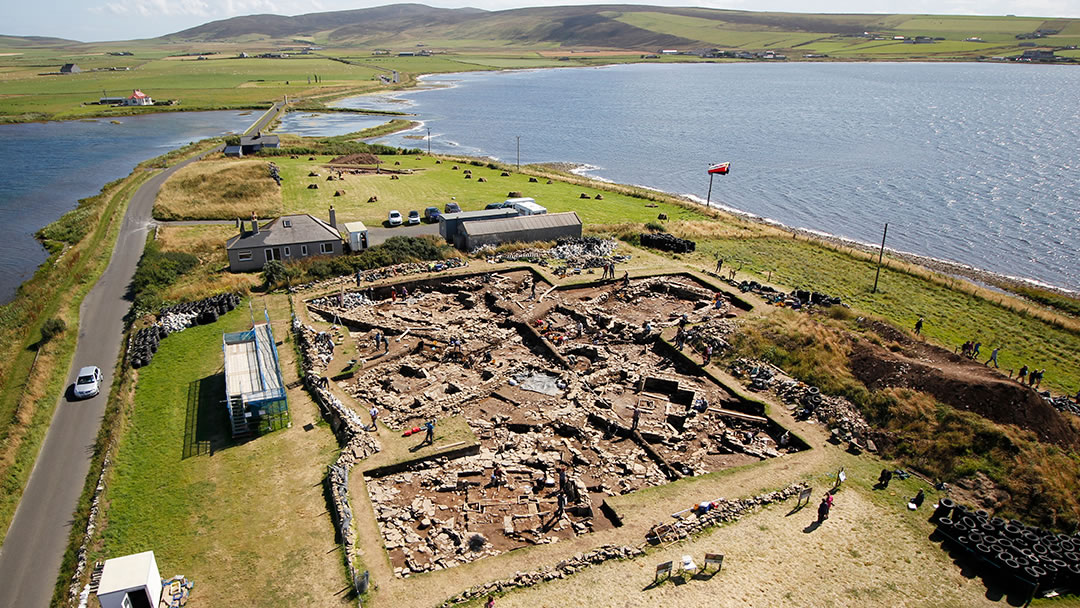
Q. Can you tell us a bit about how the Ness of Brodgar was discovered and when you became involved?
A. We always knew there was archaeology at the Ness – there are two standing stones in the garden of Loch View and over the years various artefacts were discovered in those two fields including the Brodgar Stone in the 1920’s.
In 2002 soon after the World Heritage Site was designated, the Orkney College Archaeology Department (now the UHI Archaeology Institute) in conjunction with what was then the Orkney Archaeology Trust, decided to put all the known archaeological sites into their wider context and see what else might be present between the known upstanding monuments. We employed geophysical techniques – where you pass various types of electromagnetic waves through the ground to give you an indication of what might be there.
It was a huge project covering over 300 hectares from Maeshowe all the way up beyond the Ring of Brodgar that has revealed numerous new archaeological sites. The two fields that make up the Ness were the first we surveyed and this revealed a host of geophysical anomalies. At the time we had no idea of the date of them and there wasn’t anything that indicated that they were prehistoric – we thought it was going to be a multi-period site that you often get in Orkney and can comprise of buildings of different eras constructed one on top of the other.
It was the 27th March 2003 when we got a phone call from the landowners Ola and Arnie Tait (a massive thanks to them and the Hoeys for all their support and understanding over the years). When they had the field ploughed a large, worked stone had turned up! I clearly remember visiting with Julie Gibson, the County Archaeologist and Professor Jane Downes – it was freezing standing in the field that day – and seeing this big stone slab that had obviously been artificially altered.
At that point we thought that this slab was a part of a Bronze Age cist burial, so Glasgow University was called in to investigate the presumed human remains. But what they uncovered was not a burial but the corner of one of these spectacular buildings we have at the Ness. The following year we decided to further investigate the nature of the site through a series of very small trenches and from there it’s developed into what you see today! Our main trench today seems huge but is still only 10% of the site.
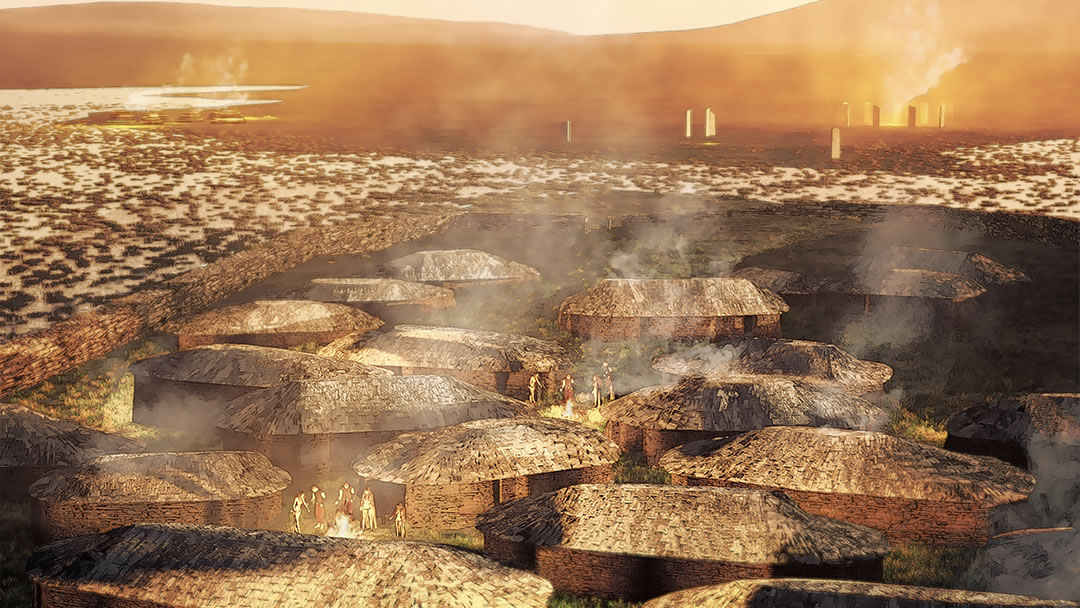
Q. How would you describe the Ness of Brodgar to a first time visitor?
A. It’s a difficult one because the Ness is unique. I think most people prior to the Ness being discovered would think of Stone Age buildings on the scale of those at Skara Brae. What we have at the Ness is a huge man-made mound which comprises of a sequence of very large, architecturally advanced and spectacular buildings contained within a massive walled enclosure all dating to the Neolithic period.
The scale and complexity and the beauteous nature of the stonework and really every other aspect of the Ness that tells us that this wasn’t a domestic site but something a lot more special. The Ness is really transforming our understanding of many aspects of the Neolithic not just in Orkney but across Britain and beyond.
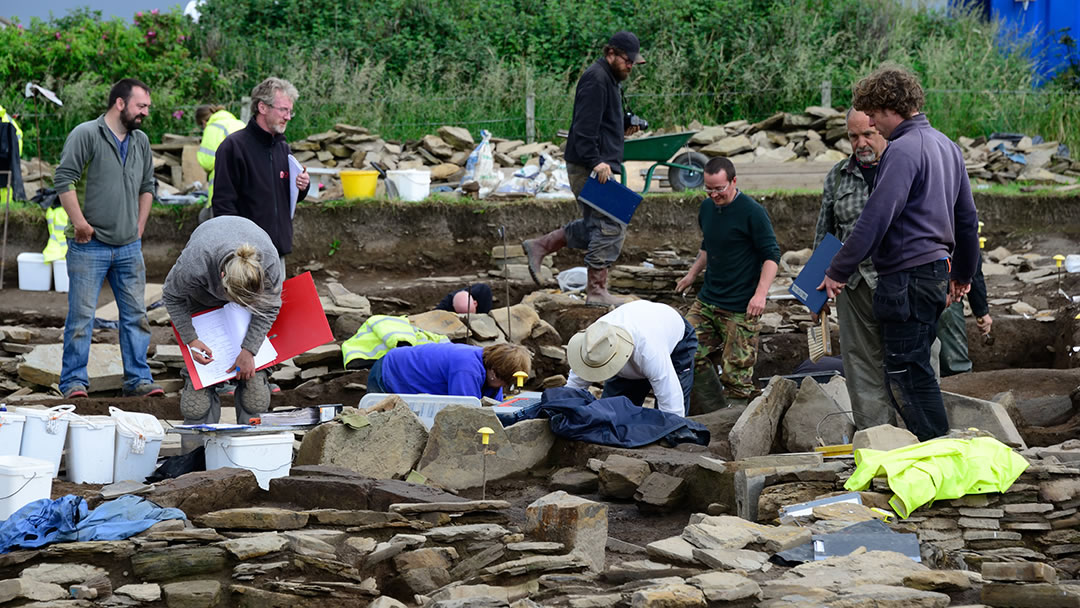
Q. Why do you think Neolithic people built the Ness of Brodgar?
A. What you’re looking at is a very special landscape. When you stand at the Ness you feel like you’re in the middle of a huge natural amphitheatre that’s defined by the hills all the way around in the far distance. All the main nearby monuments, – the Ring of Brodgar, Stones of Stenness, and Maeshowe – are all satellites to what’s happening at the Ness. The Ness has a very central location in the landscape. There is no doubt that our Neolithic ancestors chose this area because of its very special nature. At the Ness, you have land surrounded by water that in turn is surrounded by more land and then the sea – it’s like a microcosm of the wider world.
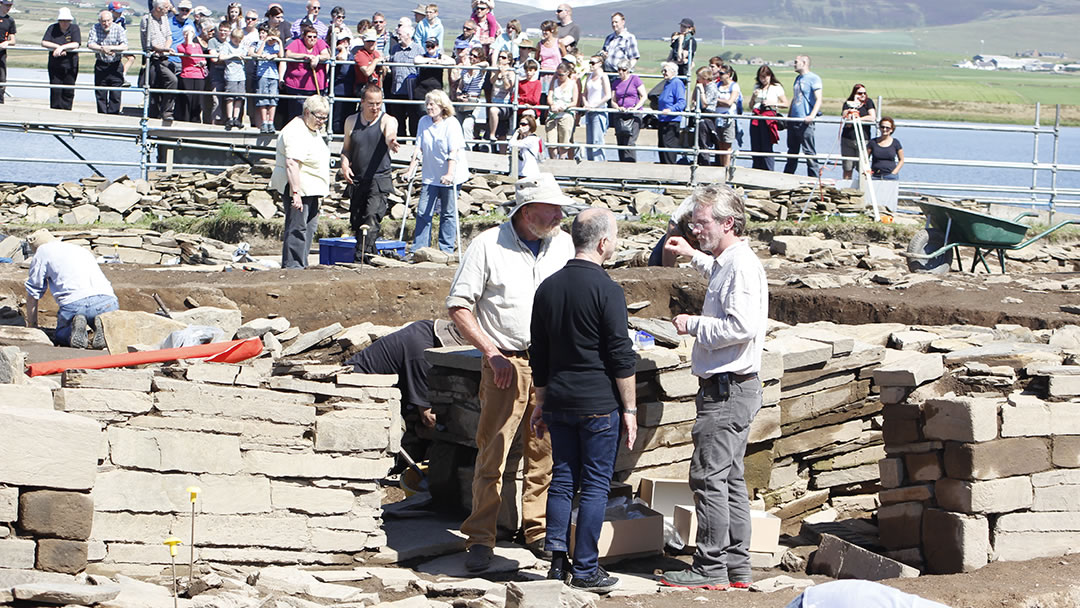
Q. Do you think the Ness, the Ring of Brodgar, Maeshowe and the Standing Stones are linked?
A. What we see today is an artificial snapshot of those monuments because each one of them has its own biography. All we are seeing is the very last stages in the creation of these monuments.
They were not all built at the same time – it was more an ongoing process as each one of those sites evolved. For example, Maeshowe might have started off as a stone circle and then it was later adapted into this wonderful chambered tomb.
The Standing Stones of Stenness might not have always had standing stones – they could have been a later addition or perhaps it was the ditch that was added to the stones. There was possibly even a large house on the site before the standing stones. What you are seeing is an amalgam of lots of different phases, and we are only seeing that final phase of each site.
When people look at them now they see them in this final artificial mode but they don’t consider perhaps the millennia or the generations that created them to give this final appearance. To complicate matters further I think some of the monuments were almost never meant to be finished. In ways it was the process of constructing them that was more important to these people than actually finishing them. To our twenty-first century eyes, it’s always the end product that is important, rather than the processes that go into their creation.
However the simplest answer is to say, yes, they were all contemporary at various stages of their life. We now have evidence that the Ness was in use for over 1,000 years. Through most of that time the Stones of Stenness would have been there in one form or another and parts of the Ring of Brodgar, Skara Brae and Maeshowe too – all inextricably linked by the Neolithic population who built and used them.
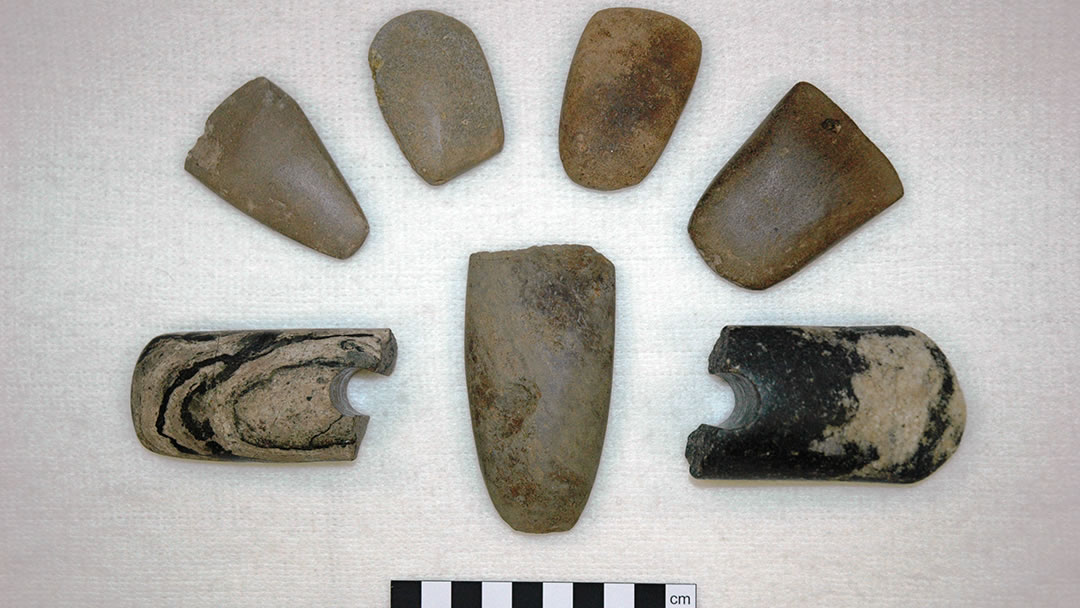
Q. It must have been a dramatic change in thinking – to suddenly imagine a massive complex between these two world famous groups of Standing Stones – did it change your ideas about the other Neolithic monuments?
A. We are so accustomed at looking at the fantastic upstanding monuments we are so lucky to have in Orkney, that to have that landscape suddenly transformed by this discovery really almost turns on its head the ideas of what was important 5,000 years ago. Was it the great stone circles or was it the Ness itself that dominated the Neolithic world? Professor Colin Richards has suggested that the circles were just peripheral to the Ness almost acting as portals to the Ness complex. I have to agree! The scale of the Ness perhaps meant that it was not only an important site in a local context but known further afield in the Neolithic world too.
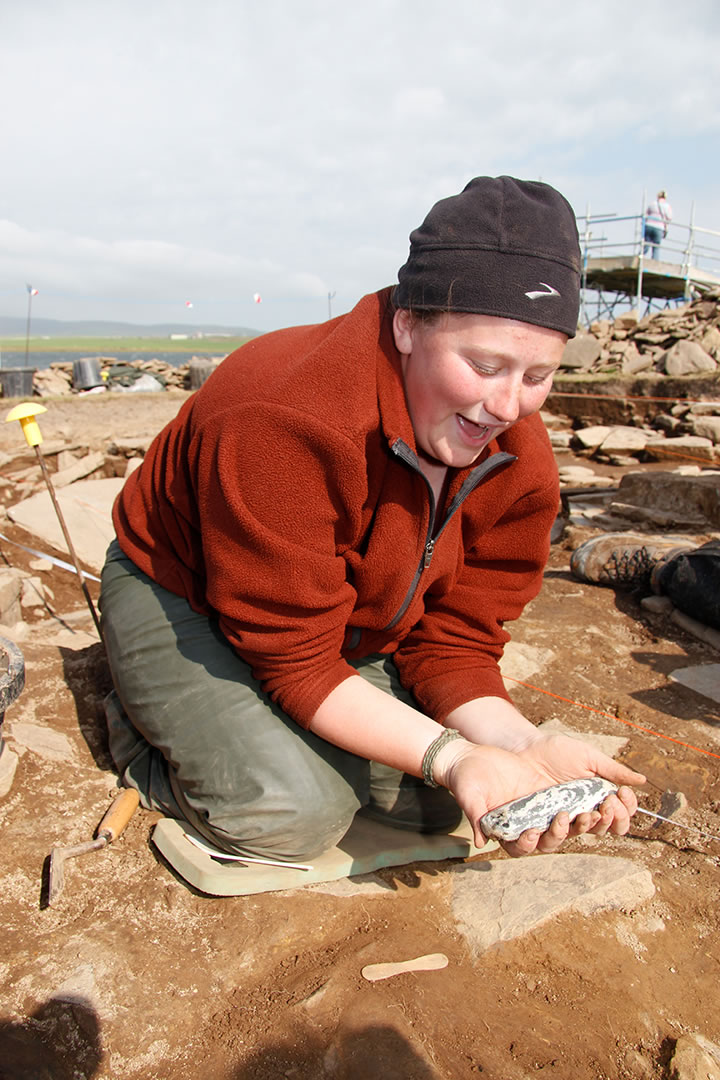
Q. Has there been any particular standout day working at the Ness of Brodgar?
A. There’s hardly a day goes by at the Ness where you don’t think wow! It really has that amazing way of totally transforming your ideas – you never know what’s going to come up, whether it’s the number and quality of the decorated stone slabs; the discovery that they were using colours on the walls of the buildings; or the first discovery in this country of painted pottery from the Neolithic . Then there’s the day we discovered the carved stone ball in 2013 – a moment I will never forget – finding an example of this type of object in a secure archaeological context – so many have been found in the past only as chance finds. Being able to relate that to the actual archaeology and confidently date it was tremendous! (Despite the fact that it cost me a bottle of malt whisky which I had promised to the finder of the first carved stone ball!)
Each week we also run an ‘Excavation Club’ for schoolchildren as a way of encouraging the next generation of archaeologists. The looks on their faces as they discover items that they are the first to touch in 5,000 years is always memorable.
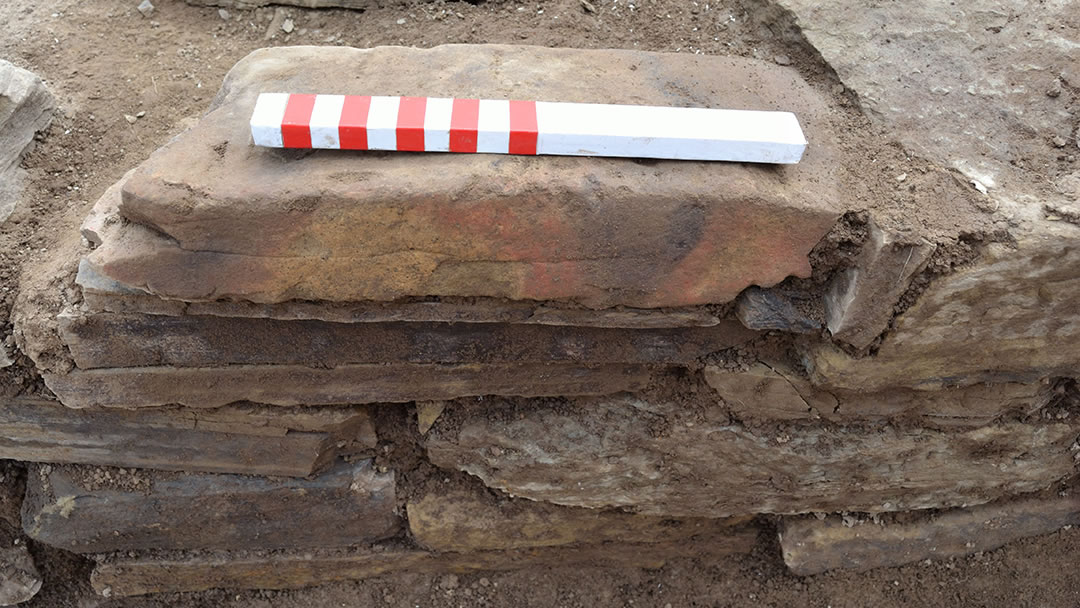
Q. Is it true that you found evidence that Neolithic people used paint? Why is this important?
A. Yes, we could never imagine life without colour – we always suspected its use in the Neolithic of Britain, when you look at all the other art work and evidence from elsewhere in the world. Previously the only evidence found were small ‘paint pots’ from Skara Brae with bits of colour that were normally interpreted as being for makeup but now we have evidence that they were applying it also to the walls of these buildings and colouring their pottery in many beautiful ways.
It really does transform our view of some of the reconstructions which often look a bit bland – they would have been in reality full of colour. One of the buildings at the Ness has different coloured pigments found on various stones – little grinding areas where these pigments would have been produced by grinding up different minerals – like a paint shop almost!
This discovery adds yet another dimension to the way we study the Neolithic and their appreciation not just in their selection of different coloured flint for tools, and stone for construction (we have naturally coloured red and yellow sandstones incorporated in our structures just like St Magnus’ Cathedral!) but also the use of colour in probably every aspect of their lives.
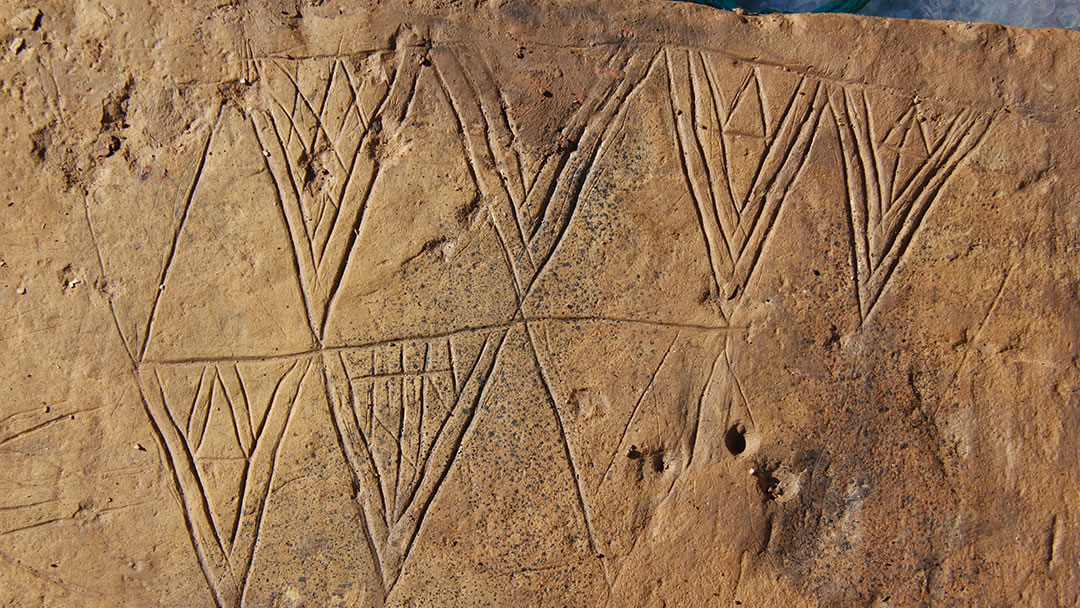
Q. Do you have any theories about what the patterns carved on stones at the Ness actually represent?
A. They obviously had meaning to whoever carved them – you often get the same design repeated again and again. It’s not writing but it was meant to convey something to those creating it and to those seeing it. Antonia Thomas is a PhD student who is studying them all – fingers crossed she’ll be able to give us many further insights. It’s not like we will ever discover a Rosetta Stone that will allow us to ‘translate’ their meaning, but by careful analysis of the 600+ examples from the Ness, many in their original positions, the Ness assemblage has the potential to radicalise our studies of the process, chronology and development of Neolithic art, in Orkney and beyond.
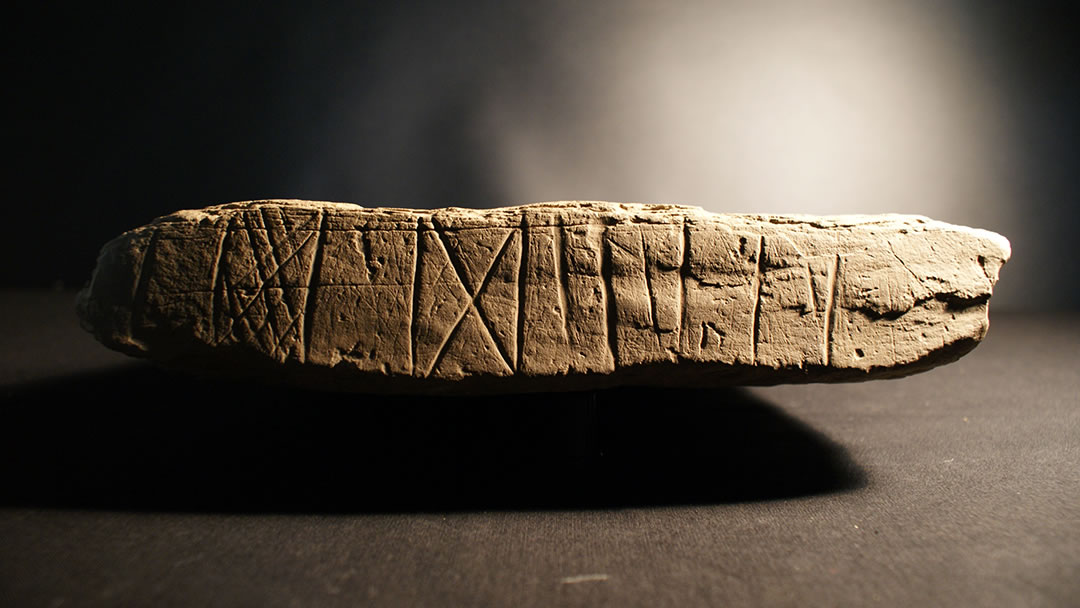
Q. It seems that Orkney in Neolithic times was an influence (with Pottery styles) on the rest of Britain. Why do you think this was?
A. Orkney, much as it is today – was a place of innovation in many respects in the Neolithic too. The history of the world is littered with Orcadians who travelled to many different corners of the world and made their mark. 5,000 years ago, Orkney was no different.
During different eras of Orkney’s history such as the Viking period, Orkney was very much a hub, a crossroads – perfectly situated at the heart of trade routes along the east and west coasts of Britain. It was a maritime society but also blessed with fertile soils, so farming as now would have been important too. Orkney has a wide open landscape with gently rolling hills. It isn’t as harsh as Shetland or the North of Scotland. Indeed an ideal place for innovation to occur with sedentary settlement possible from an early stage, and the dissemination of that knowledge via sea routes.
However it is very much open to debate why this particular style of pottery Grooved Ware started in Orkney and spread all over Britain and Ireland to become this pan-British phenomenon. It was certainly a dramatic change from earlier styles of pottery.
This wide ranging influence was not just limited to the pottery but also some of the earliest dates we have for henges are from the Stones of Stenness. So again an idea adopted across Neolithic Britain may have had its origins in Orkney.
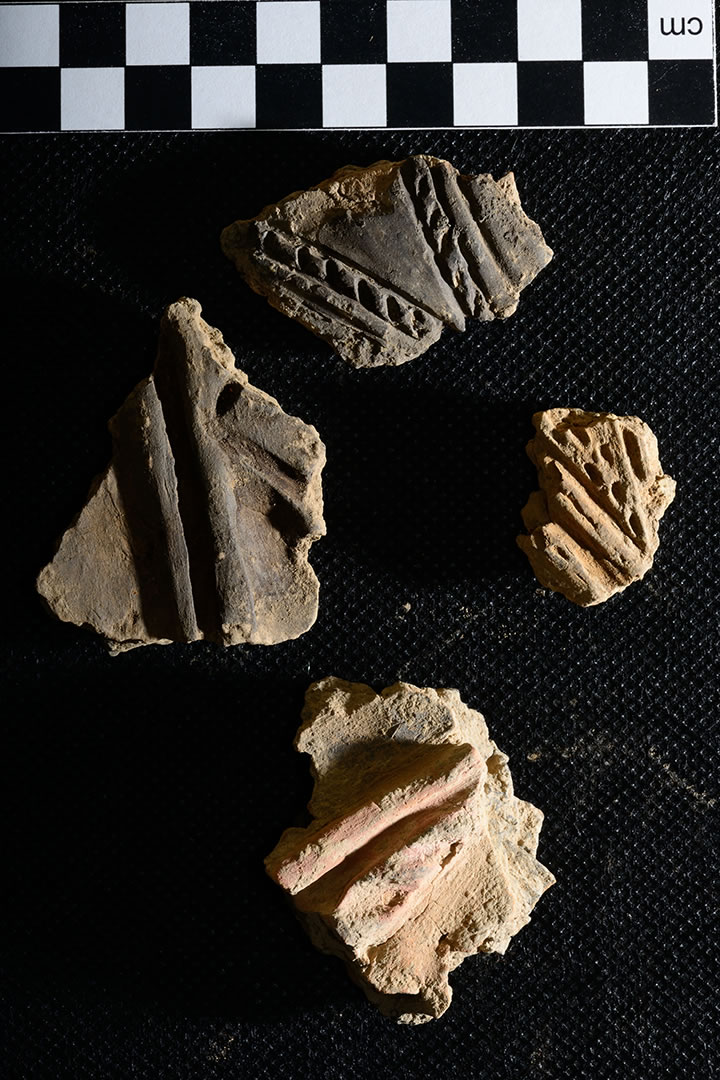
Q. There’s a theory that the walls found at the Ness of Brodgar might have restricted access to the neighbouring Ring of Brodgar – is this possible?
A. The enclosing walls were a real shock to us. It was one of those days on the site where it suddenly all clicked together. Initially we discovered a wall on the north end of the site facing the Ring of Brodgar that was initially 4m wide which spanned the peninsula. Later it was even wider – 6m wide, which was one of the reasons why it was nicknamed the ’Great Wall of Brodgar’ on site – it is just monumental in size.
Then we discovered the wall on the south side of the site too overlooking the Bridge of Brodgar – and together, these two walls seem to contain all the major structures of the Ness of Brodgar. When you initially look at walls like that, it’s easy to think of them as defensive. However, I think that these walls firstly highlighted the status of the Ness – making a statement about how important the Ness was and secondly, they restricted access – not just to the Ness itself but also controlling movement right up and down the Brodgar peninsula. Perhaps only certain elements of the population were allowed to pass through the Ness of Brodgar.
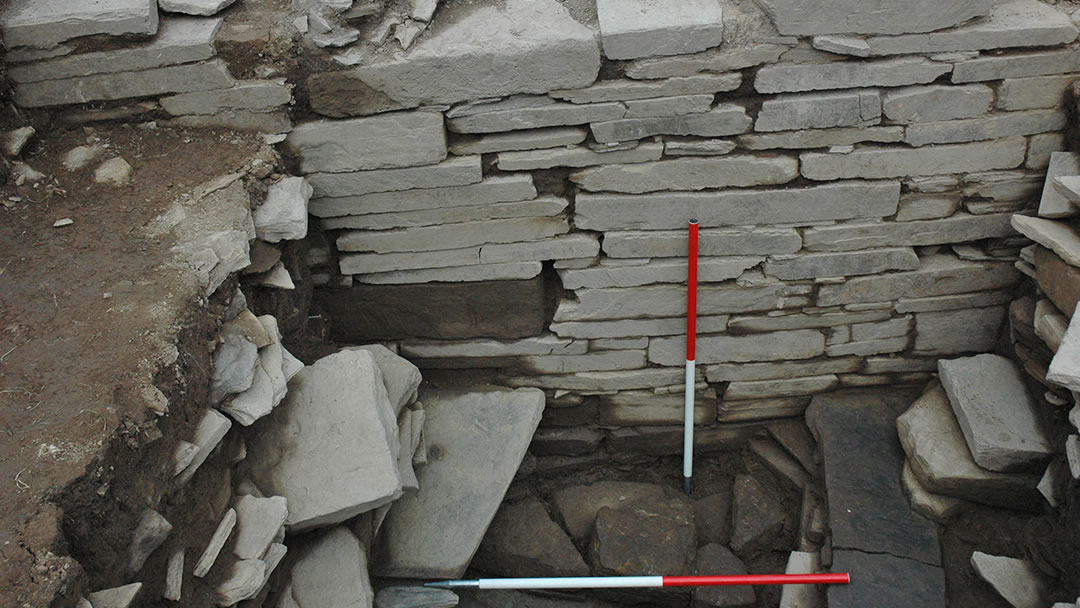
Q. The Ness is thought to have been abandoned in a dramatic fashion. Can you tell us a bit about it and why the Neolithic people did this?
A. Dramatic is maybe too strong a word for it. However, around about 2300 BC it seems that the last major buildings of the site were deliberately demolished or deconstructed, and the buildings smothered with monumental amounts of midden – it was as if there was an attempt to erase the site from memory. It is too easy a solution to say that this was due to the introduction of new metal (bronze) technologies and all the social changes that this entailed. It is much more likely that there were a number of contributory factors, but whatever happened the grandeur of the heyday of the Ness was eclipsed.
We must remember that like the modern world life and society in the Neolithic and prehistory was not static, people’s ideas and beliefs evolved and changed – a very dynamic system.
An element of this ‘decommissioning process’ was the deposition of a mass of animal bone around the largest building on site, Structure 10 – hundreds of cattle and mainly just their shin bones. It’s not just a dump of animal bone – it was all laid out very carefully!
An Orcadian told me about their grandfather who was considered to be quite a wealthy farmer because he had 6 cows. At the Ness of Brodgar there are at least 400 cattle, possibly as many as 600 represented in what appears to be a single event. We’ve just recently received more radio carbon dates and again, all the dates are concentrated around 2300BC supporting the idea that all the cattle were killed and deposited at this one time. It must have been quite an event!! Neil Oliver called it the biggest barbecue in history – which marks the end of the Ness of Brodgar.
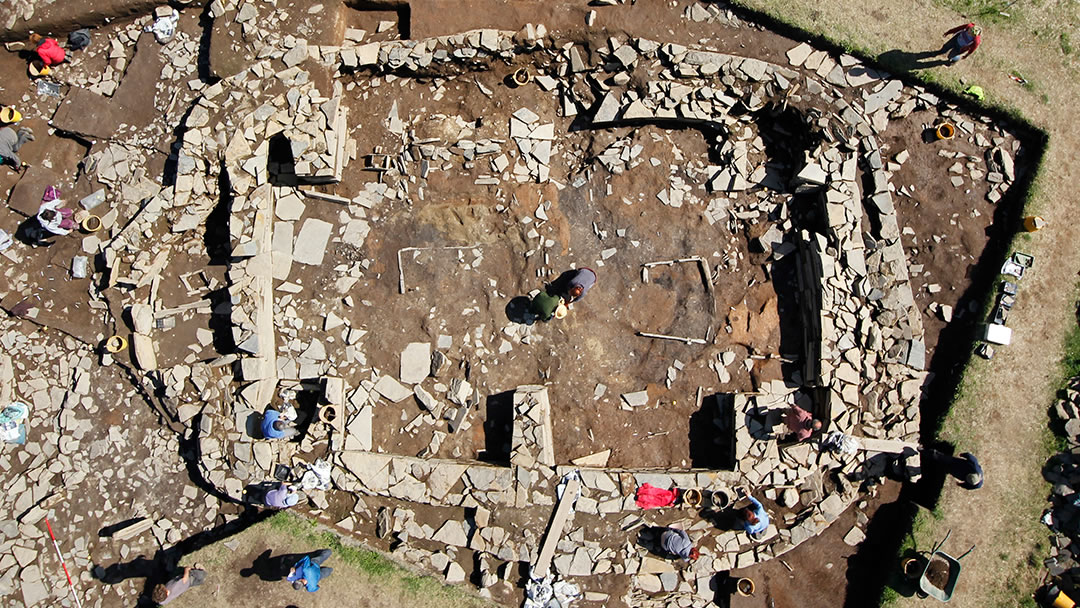
Q. It seems remarkable that such a big structure became ‘hidden’ in the landscape – how did this happen?
A. Some of the building was deliberately demolished and huge amounts of midden material, rubbish, were brought to the site and dumped, to cover it up. It seems to have been a deliberate act! The Ness of Brodgar was so well covered that for the next 4000 years the site was forgotten about. We discovered in 2014 that Iron Age people had remodelled a part of the site but they probably didn’t realise what they were changing or what was below their feet!
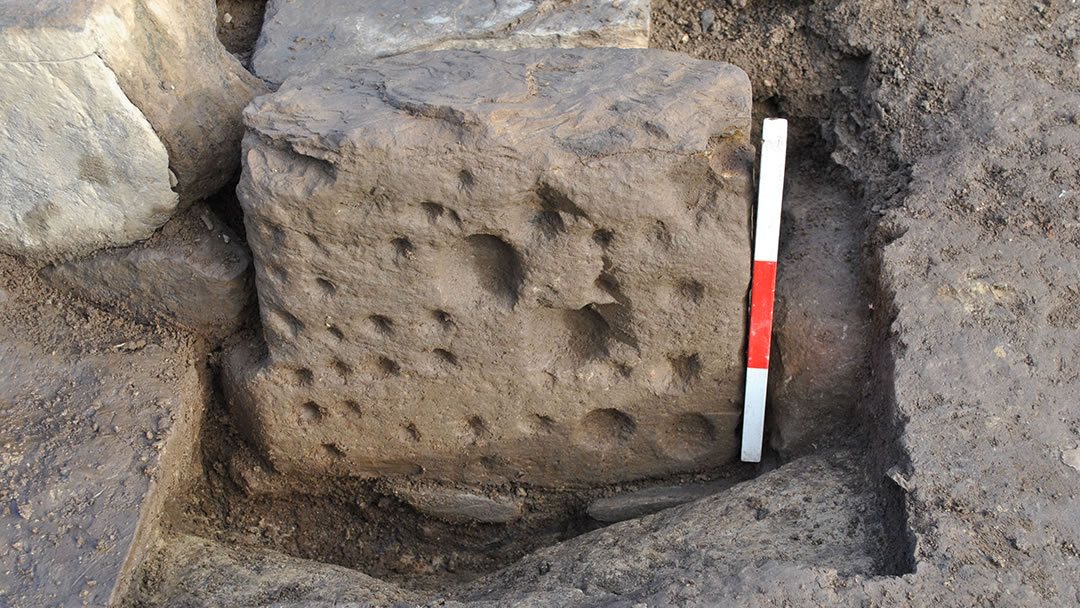
Q. The neighbouring loch of Stenness at the time was marshland. Do you think there are any discoveries to be made in the loch?
A. Almost undoubtedly there are. Caroline Wickham Jones from Aberdeen University and her team have been studying the changing sea levels since the end of the last Ice Age. In particular they have been looking at when the Loch of Stenness and the Loch of Harray were formed. What they are discovering is that Stenness probably didn’t become joined to the sea until sometime through the life of the Ness of Brodgar. Prior to the sea breaking through, as the sea levels gradually rose, Stenness and Harray were probably both much smaller bodies of standing water. A lot of it was boggy and marshy and there’s almost undoubtedly associated archaeology somewhere under both lochs.
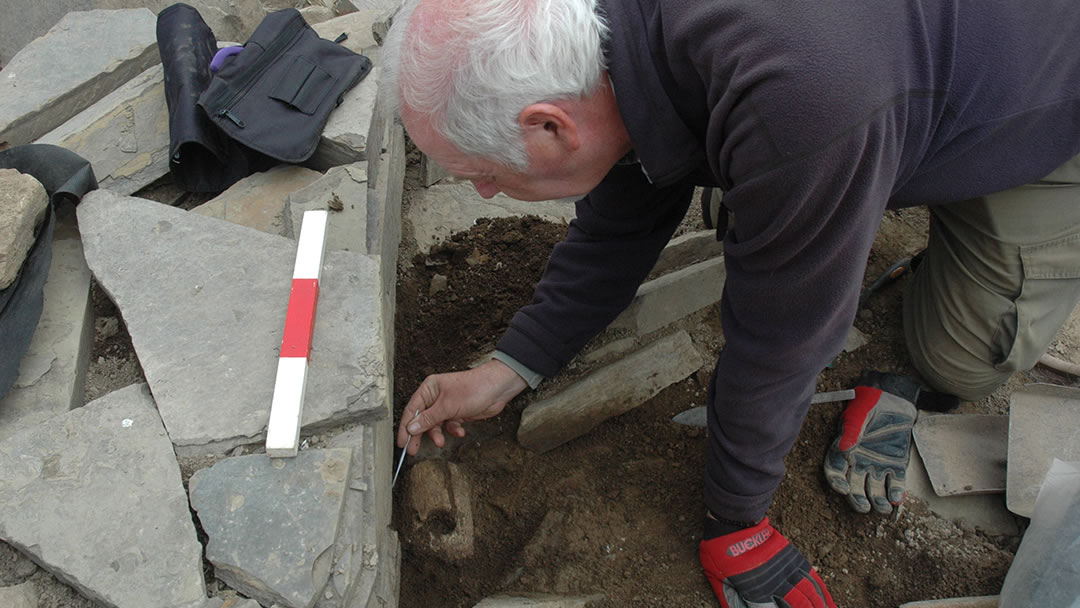
Q. Every year you excavate the Ness over a short summer period – what restricts the digging and how do you plan what you’re going to investigate each year?
A. Each year we devise an excavation strategy by considering what’s been discovered in previous years and how we might answer specific questions. The excavation of the buildings in particular is ongoing because it takes a long time (and lots of patience) to disentangle the different elements of such well-preserved structures and their complicated histories. In archaeological terms, the Ness is a hugely complex site. We’ve been very lucky with the team we have managed to assemble – we have some of the top archaeologists in the country – but there’s still a lot of head scratching that goes on.
It is the finances that restrict the digging. We raise funds for the Ness of Brodgar throughout the year from a number of sources– but more and more it’s the general public that support it. In the last year not only have we set up the Ness of Brodgar Trust – http://www.nessofbrodgar.co.uk/ – which is a UK registered charity but we have also established the American Friends of the Ness of Brodgar – http://www.nessofbrodgar.com/ – which is an American IRS registered charity.
The money from these supports not only the excavation work but also the monumental task of post-excavation work that goes on behind the scenes throughout the year – the scientific analysis and study of the artefacts by various specialists – it all costs money. Although most of the team on site are students, volunteers and even archaeologists on ‘busmans holidays’ (up to 90 at any one time), it still takes a core of professionals to organise and supervise it all. A massive thanks to all the team from every corner of the globe.
If anybody wishes to support us they can do so through either of those charities or get in contact with me. There are also collection boxes on the site itself, and although the guided tours are free, people are encouraged to leave a donation. Orkney has benefited hugely from the discovery of the Ness and we really appreciate and need the support of the public and businesses to allow this asset to be further realised to a worldwide audience.
 By Magnus Dixon
By Magnus DixonOrkney and Shetland enthusiast, family man, loves walks, likes animals, terrible at sports, dire taste in music, adores audiobooks and films, eats a little too much for his own good.

Pin it!